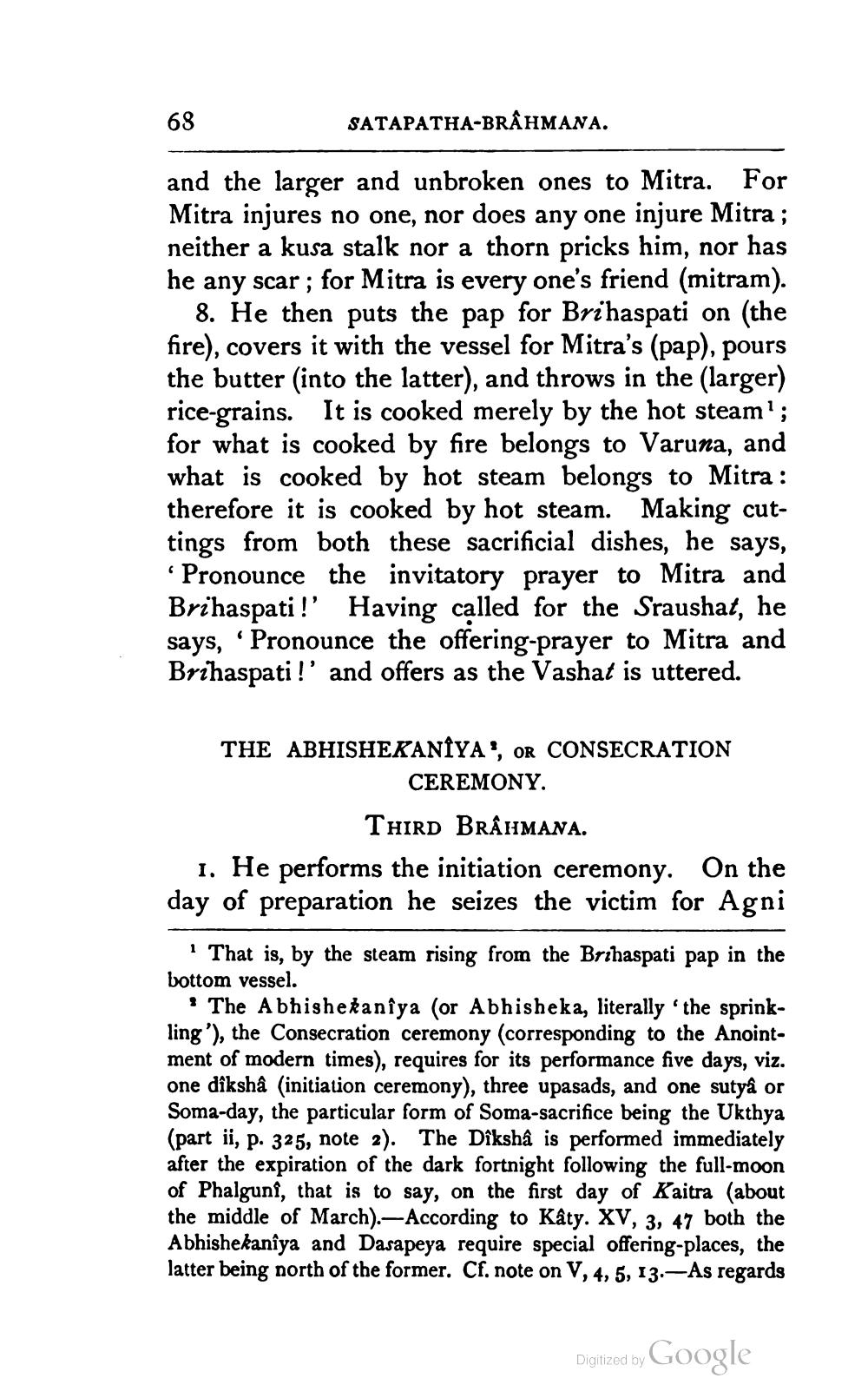________________
68
SATAPATHA-BRAHMANA.
and the larger and unbroken ones to Mitra. For Mitra injures no one, nor does any one injure Mitra ; neither a kusa stalk nor a thorn pricks him, nor has he any scar; for Mitra is every one's friend (mitram).
8. He then puts the pap for Brihaspati on (the fire), covers it with the vessel for Mitra's (pap), pours the butter (into the latter), and throws in the (larger) rice-grains. It is cooked merely by the hot steam1; for what is cooked by fire belongs to Varuna, and what is cooked by hot steam belongs to Mitra : therefore it is cooked by hot steam. Making cuttings from both these sacrificial dishes, he says, 'Pronounce the invitatory prayer to Mitra and Brihaspati!' Having called for the Sraushat, he says, 'Pronounce the offering-prayer to Mitra and Brihaspati!' and offers as the Vashat is uttered.
THE ABHISHEKANÎYA', OR CONSECRATION
CEREMONY.
THIRD BRAHMANA.
1. He performs the initiation ceremony. On the day of preparation he seizes the victim for Agni
That is, by the steam rising from the Brihaspati pap in the bottom vessel.
The Abhishekanîya (or Abhisheka, literally 'the sprinkling'), the Consecration ceremony (corresponding to the Anointment of modern times), requires for its performance five days, viz. one dîkshâ (initiation ceremony), three upasads, and one sutyâ or Soma-day, the particular form of Soma-sacrifice being the Ukthya (part ii, p. 325, note 2). The Dîkshâ is performed immediately after the expiration of the dark fortnight following the full-moon of Phalgunî, that is to say, on the first day of Kaitra (about the middle of March).-According to Kâty. XV, 3, 47 both the Abhishekanîya and Dasapeya require special offering-places, the latter being north of the former. Cf. note on V, 4, 5, 13.-As regards
Digitized by
Google




